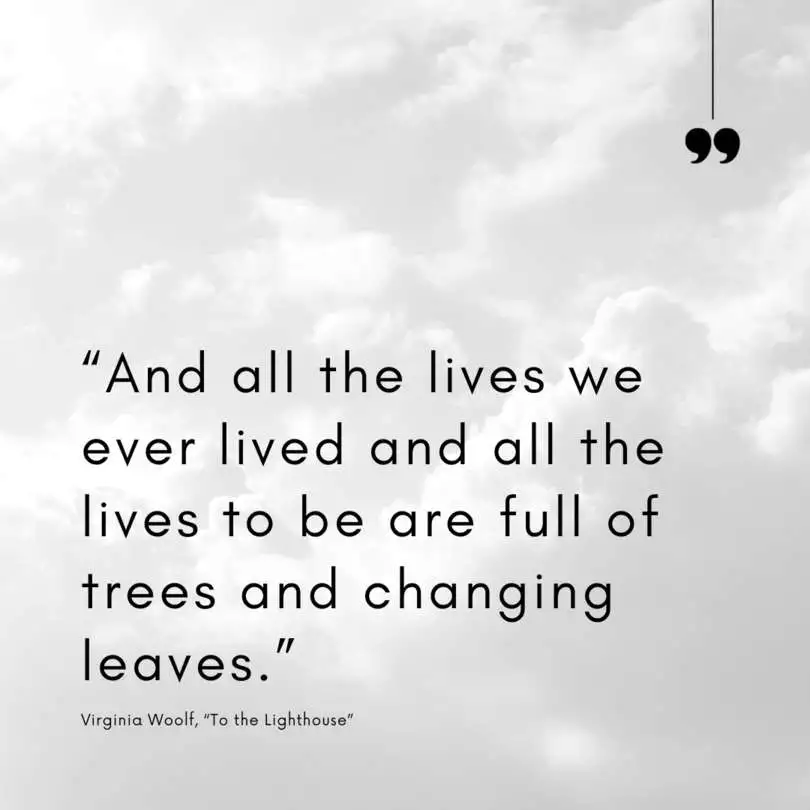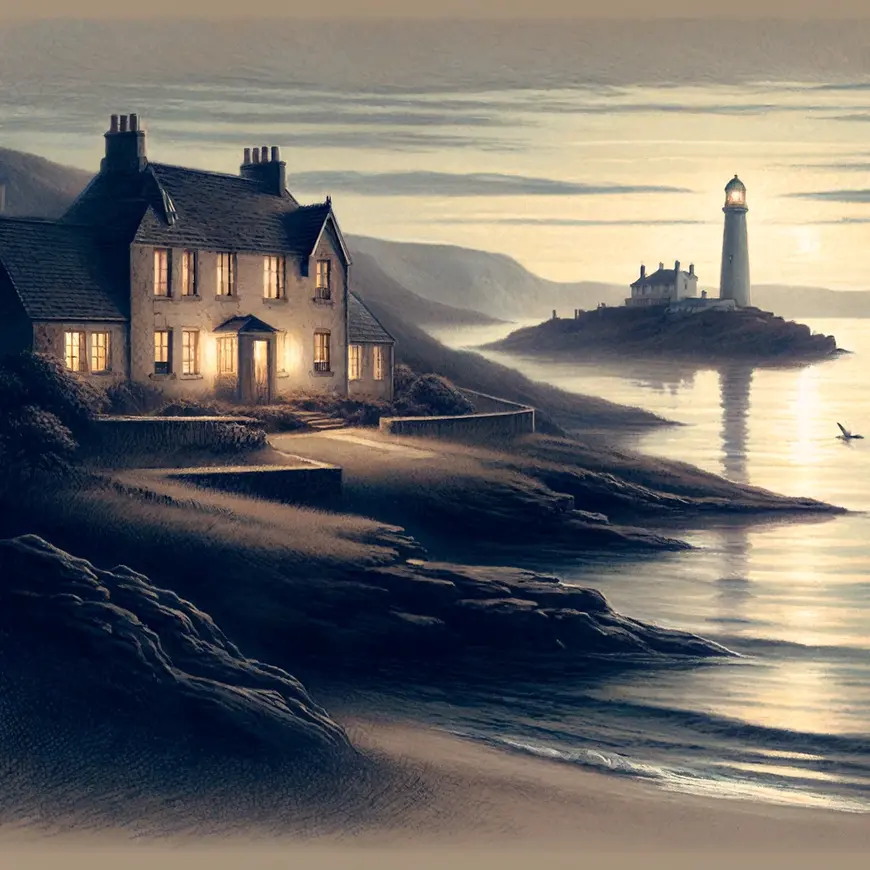A Poetic Journey of Time and Perception – Virginia Woolf’s “To the Lighthouse”
Embark on a mesmerizing voyage through the realms of memory and consciousness with Virginia Woolf‘s timeless novel, “To the Lighthouse.” With its lyrical prose and intricate exploration of human emotions, this literary masterpiece immerses readers in the lives of the Ramsay family, capturing the ebb and flow of time and the ever-changing landscape of perception. Through its poignant characters and introspective narrative, “To the Lighthouse” offers a profound meditation on the complexities of relationships, the passage of time, and the elusive nature of human connection.
A Tapestry of Human Emotions: “To the Lighthouse”
“To the Lighthouse” takes place at the Ramsay family’s summer home on the Isle of Skye. At the core of the novel are the relationships between family members, each portrayed with profound emotional depth. Woolf’s rich characterization delves into the intricate web of love, longing, and understanding that binds the Ramsay family together.
The novel’s characters, such as Mrs. Ramsay, Mr. Ramsay, and their children, showcase the nuances of human emotions and the complexities of familial bonds. As readers traverse the inner lives of these characters, they encounter a tapestry of human experiences, evoking a deep sense of empathy and connection.

The Passage of Time
Time is a central motif in “To the Lighthouse.” Woolf skillfully portrays the passage of time and its impact on relationships and perceptions. The novel is divided into three parts, “The Window,” “Time Passes,” and “The Lighthouse,” each depicting different moments in the characters’ lives and the changing dynamics within the Ramsay family.
Woolf’s poetic prose beautifully captures the fleeting nature of time, reminding readers of life’s transience and the importance of cherishing the present moment. Through the lens of time, the novel becomes a reflection on the human experience, inviting introspection on the impermanence of all things.
Stream of Consciousness Narrative: Virginia Woolf’s “To the Lighthouse”
“To the Lighthouse” is celebrated for its innovative narrative style, known as stream of consciousness. Woolf delves into the characters’ minds, capturing their inner thoughts, feelings, and perceptions in a continuous flow of consciousness. This narrative technique provides a deeper understanding of the characters’ motivations and emotional states, drawing readers into their inner worlds.
The stream of consciousness narrative mirrors the way thoughts meander and connect in our minds, making the novel a profoundly introspective and immersive experience. Woolf’s use of this technique elevates “To the Lighthouse” beyond a conventional narrative, creating a rich tapestry of human consciousness.
Nature and the Human Psyche
Nature plays a significant role in “To the Lighthouse,” mirroring the characters’ emotions and inner turmoil. The changing landscapes and sea motifs symbolize the ebb and flow of human emotions, as well as the unpredictability of life.
The characters’ interactions with nature reflect their inner states, deepening the novel’s emotional resonance. Woolf’s lyrical descriptions of the natural world evoke a sense of wonder and interconnectedness, blurring the boundaries between the human psyche and the external world.
The Quest for Meaning and Connection
“To the Lighthouse” delves into the human desire for meaning and connection. The characters yearn for understanding and intimacy, grappling with the complexities of their emotions and relationships. Woolf’s portrayal of these yearnings resonates with readers, as it mirrors the universal search for purpose and belonging.
As the Ramsay family embarks on a journey to the lighthouse, the novel becomes a metaphor for the human quest for meaning and the elusive nature of fulfillment. “To the Lighthouse” challenges readers to ponder the essence of human existence and the ways in which we seek meaning amidst life’s uncertainties.

Famous Quotes from “To The Lighthouse” by Virginia Woolf
- “For nothing was simply one thing.”
- Explanation: This quote reflects Woolf’s exploration of the complexity and multifaceted nature of reality. It suggests that every person, object, and experience is composed of multiple layers and meanings, resonating with the novel’s theme of subjective perception and the fluidity of human experience.
- “They went to the Lighthouse because they liked it; because it was something that they did; because it was something that they had done every year; because it was something that they would do for ever.”
- Explanation: This quote captures the motif of routine and tradition within the Ramsay family. The lighthouse symbolizes stability and continuity in their lives, serving as a constant point of reference amidst the changing dynamics of the family and the passage of time.
- “What is the meaning of life? That was all—a simple question; one that tended to close in on one with years, the great revelation had never come. The great revelation perhaps never did come. Instead, there were little daily miracles, illuminations, matches struck unexpectedly in the dark; here was one.”
- Explanation: Woolf addresses the existential quest for meaning, suggesting that life’s ultimate purpose might not be revealed in grand moments but rather in small, everyday experiences. The metaphor of “matches struck unexpectedly in the dark” illustrates how brief moments of insight and beauty can illuminate the otherwise mundane aspects of life.
- “Time passes, and little by little everything that we have spoken in falsehood becomes true.”
- Explanation: This quote delves into the nature of time and memory, themes central to the novel. It implies that as time goes by, perceptions and interpretations of events and words can change, sometimes leading to a convergence of past falsehoods with present truths. This reflects Woolf’s interest in the fluidity of time and the evolving nature of reality.
These quotes from “To the Lighthouse” highlight Virginia Woolf’s profound insights into human nature, the passage of time, and the complexity of existence. Her lyrical prose and deep psychological exploration make this novel a cornerstone of modernist literature.
Trivia Facts about “To the Lighthouse”
- Set in the Isle of Skye: “To the Lighthouse” is set on the Isle of Skye in Scotland, which Woolf visited with her family as a child. The novel’s setting is based on Woolf’s own summer holidays in St. Ives, Cornwall, where the Godrevy Lighthouse served as inspiration. These locations provided Woolf with vivid childhood memories that deeply influenced the novel’s atmospheric and evocative descriptions.
- Influence of James Joyce: Virginia Woolf was contemporaries with James Joyce, and both writers were key figures in the modernist literary movement. “To the Lighthouse,” like Joyce’s “Ulysses,” employs stream-of-consciousness narrative techniques and explores the inner thoughts and perceptions of its characters. Woolf admired and critiqued Joyce’s work, and their mutual exploration of consciousness and time significantly shaped modernist literature.
- Literary Connections with T.S. Eliot: Woolf’s close friend and fellow writer T.S. Eliot had a significant influence on her work. Eliot’s poetry, particularly “The Waste Land,” shares Woolf’s themes of time, memory, and the search for meaning. Both writers were central figures in the Bloomsbury Group, a collective of intellectuals and artists in London, and their exchanges of ideas enriched their respective works.
- Bloomsbury Group Influence: The Bloomsbury Group, which included writers like E.M. Forster, Lytton Strachey, and Woolf herself, profoundly influenced “To the Lighthouse.” This group often discussed art, literature, and philosophy, promoting progressive ideas that permeated Woolf’s writing. The intellectual environment of Bloomsbury encouraged Woolf to experiment with narrative structure and delve deeply into psychological and existential themes in her novel.
Conclusion: Virginia Woolf’s “To the Lighthouse”
Virginia Woolf’s “To the Lighthouse” is a poetic and introspective journey that captivates with its profound exploration of human emotions and the passage of time. Through its beautifully drawn characters and innovative narrative style, the novel becomes a meditation on the complexities of relationships and the ever-changing landscape of perception.
As readers traverse the inner lives of the Ramsay family, they are confronted with themes of love, loss, and the human quest for meaning. “To the Lighthouse” stands as a timeless testament to Woolf’s literary genius and her ability to illuminate the intricacies of the human psyche.
For those seeking a lyrical and introspective read, “To the Lighthouse” is a timeless classic that continues to enchant with its poetic prose and timeless reflections on the human experience.
Reviews of Works by Virginia Woolf
An Ode to the Human Spirit – A Review of Virginia Woolf’s “The Waves” Woolf’s Masterpiece of Inner Worlds –…
Embarking on the Journey of Self-Discovery – A Review of “The Voyage Out” by Virginia Woolf Navigating the Seas of…
Exploring the Compelling Novel of “Night and Day” by Virginia Woolf “Night and Day” by British Author Virginia Woolf is…
Orlando by Virginia Woolf: A Time-Traveling Odyssey Through Gender and Identity Quick Summary: My Thoughts on Orlando by Virginia WoolfReading…
The Labyrinth of the Human Mind: Virginia Woolf’s “Mrs. Dalloway” Virginia Woolf, an influential figure in the modernist literary movement,…




